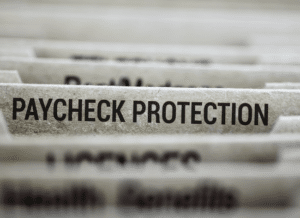If you own a successful small business with no employees, you might be ready to set up a retirement plan. Or you might want to upgrade from a more-basic SIMPLE IRA or Simplified Employee Pension (SEP) plan. Here are two options — solo 401(k)s and defined benefit pension plans — to consider if you have healthy self-employment income and want to contribute substantial amounts to your retirement nest egg.
Important: This article is geared toward self-employed individuals. That includes sole proprietors, partners, owners of single-member limited liability companies (LLCs) that are treated as sole proprietorships for tax purposes and members of multi-member LLCs that are treated as partnerships for tax purposes.
Solo 401(k)s
With a solo 401(k) plan, you can potentially make large annual deductible contributions to your retirement account. However, that advantage comes with some administrative complexity.
For the 2022 tax year, you can make a so-called “elective deferral contribution” of up to $20,500 of your net self-employment (SE) income to a solo 401(k). The elective deferral contribution limit increases to $27,000 if you’ll be 50 or older as of December 31, 2022. The larger $27,000 figure includes an extra $6,500 catch-up contribution that’s allowed for these older account owners.
On top of your elective deferral contribution, an additional contribution of up to 20% of your net SE income is permitted for solo 401(k)s. This additional pay-in is called an “employer contribution,” though there’s technically no employer when you’re self-employed. For purposes of calculating the employer contribution, your net SE income isn’t reduced by your elective deferral contribution.
For the 2022 tax year, the combined elective deferral and employer contributions can’t exceed:
- $61,000 ($67,500 if you’ll be 50 or older as of December 31, 2022), or
- 100% of your net SE income.
Net SE income equals the net profit shown on Form 1040 Schedule C, E or F for the business minus the deduction for 50% of self-employment tax attributable to the business. For further information, see “How Much Can You Contribute to a Solo 401(k)?” at right.
Besides the ability to make large annual deductible contributions, another key advantage of solo 401(k) plans is that contributions are completely discretionary. When cash is tight, you can contribute a small amount or nothing. In years when you’re flush with cash, you can contribute the maximum allowable amount.
In addition, you can borrow from your solo 401(k) account, assuming the plan document permits it (which you should insist on). The maximum loan amount is 50% of the account balance or $50,000, whichever is less. Some other retirement plan options, including SEPs, don’t allow loans.
The biggest downside to solo 401(k)s is their administrative complexity. Significant upfront paperwork and some ongoing administrative efforts are required, including adopting a written plan document and arranging for how and when elective deferral contributions will be collected and paid into the owner’s account. Also, once your solo 401(k) account balance exceeds $250,000, you must file Form 5500-EZ with the IRS each year. Fortunately, your tax and financial advisors can help you set up and operate the plan.
If your business has one or more employees, you obviously can’t have a solo 401(k). Instead, you’ll have a multi-participant 401(k) with all the resulting complications. The tax rules may require you to make contributions for those employees. However, there’s an important loophole: You can exclude employees who are under 21 and employees who haven’t worked at least 1,000 hours during any 12-month period from 401(k) plan coverage.
To take advantage of this exclusion rule, consider the feasibility of employing only younger and/or part-time workers. That way, you’ll effectively operate a solo 401(k).
Bottom line: For a one-person business, a solo 401(k) can be a smart tax-favored retirement plan choice if:
- You want to make large annual deductible contributions and have the cash to do so,
- You have substantial net SE income, and
- You’re 50 or older and can, therefore, take advantage of the extra catch-up elective deferral contribution.
Before you jump on the solo 401(k) bandwagon, however, weigh the pros and cons of a defined benefit pension plan — especially if you’re 50 or older.
Defined Benefit Pension Plans
A defined benefit pension plan is designed to deliver a target level of annual payouts from your account after you reach a stipulated retirement age. You make annual deductible contributions, which must be calculated by an actuary, to fund target payouts.
Target payouts can be based on a fixed percentage of your average net SE income over a stipulated time period, a flat monthly dollar amount or a formula based on years of service. For the 2022 tax year, allowable contributions must be based on an annual target payout that can’t exceed $245,000. A defined benefit pension plan can potentially allow large annual deductible contributions to fund generous retirement age payouts — resulting in large annual tax savings, especially if you’re 50 or over.
Making large annual tax-saving contributions might sound like a great idea, but not everyone has tons of cash available to cover big contributions. Plus, once your plan is set up, actuarially determined annual contributions are mandatory. In contrast, contributions to other types of plans are discretionary.
It’s also important to point out that defined benefit pension plans must generally cover your employees, too. However, the plan can include vesting and exclusion provisions to help prevent briefly employed workers from leaving with employer contributions.
Additionally, defined benefit plans are complicated. They generally require a customized plan document, along with annual actuarial calculations to determine how much to contribute each year. Your financial and tax advisors can help you crunch the numbers or locate a specialist who can help operate your pension at an affordable cost.
Bottom line: It’s important to clearly understand what you’re getting into before opting for a defined benefit pension plan.
What’s Best for You?
Solo 401(k)s and defined benefit pension plans are anything but simple. However, they can allow self-employed individuals to make substantial and deductible annual contributions to a retirement nest egg.
How Much Can You Contribute to a Solo 401(k)?
When it comes to solo 401(k)s, elective deferral and employer contributions can really add up. To illustrate, suppose you’re 45 and operate a single-member limited liability company that’s treated as a sole proprietorship for tax purposes. In 2022, you have net self-employment (SE) income of $100,000 (after subtracting 50% of your SE tax bill).
In this case, the maximum deductible contribution to a solo 401(k) plan set up for your benefit would be $40,500. That amount is composed of 1) a $20,500 elective deferral contribution, and 2) a $20,000 employer contribution (20% of $100,000). This amount is significantly more than you could contribute to a Simplified Employee Pension (SEP). With a SEP, your maximum contribution would be $20,000 (20% of $100,000). The $20,500 difference is attributable to the solo 401(k)’s relatively generous elective deferral contribution.
If, under the same business ownership scenario, you’re 50 or older, the maximum contribution to your solo 401(k) account would be $47,000. That amount is composed of 1) a $27,000 elective deferral contribution, including the $6,500 extra “catch-up” contribution, and 2) a $20,000 employer contribution (20% of $100,000).
For more information, contact Mikki Obreja using our online contact form.
Councilor, Buchanan & Mitchell (CBM) is a professional services firm delivering tax, accounting and business advisory expertise throughout the Mid-Atlantic region from offices in Bethesda, MD and Washington, DC.



